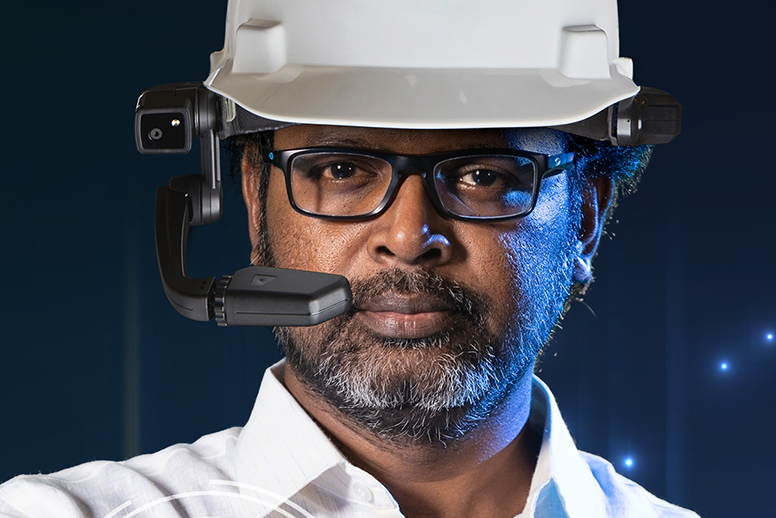

Author - Dr. C. S S Bharathy
Founder - Fusion VR
Certified Industry 4.0 Professional
Publication - Technuter
Date - Dec 21, 2018

Read From Source: Technuter
Even though Virtual Reality (VR) was existing since the 1950s and the early versions of Augmented Reality (AR) appeared during the 1990s, they mainly came into the limelight ever since the launch of the Oculus headsets in 2013. The expectation for the mass VR adoption in social media went even higher after Facebook bought over Oculus during 2014. Foreseeing a massive user base, a variety of VR hardware started flooding the market, especially from big brands, such as, Sony, Samsung, Microsoft, and HTC, leaving us with more choices.
During the initial Extended Reality (XR) wave in 2015, the global VR market was predicted to be in multiples of the AR market. However, the latest statistics and predictions report that the global revenue of AR is going to be almost double when compared to VR for the next three years, which sums up to USD 133 billion. In 2017, Gartner’s hype-cycle for emerging technologies placed VR in the slope of enlightenment predicting to reach the Plateau of Productivity (mass adoption) in the next 2 to 5 years. Additionally, AR got its place in the trough of disillusionment with the prediction for mass adoption in the next 5 to 10 years. But in the 2018 hype-cycle, surprisingly, VR was missing but Mixed Reality (MR) appeared as a newcomer in the trough of disillusionmentalong with AR. Later, it was clarified that since VR was considered as mature technology, it had been removed from the hype-cycle, which only deals with emerging technologies. So, which is true? Is AR really overtaking VR? Is it right to consider VR as mature technology? If so, then what is the stand towards MR? Let’s find out which one is winning, where’s the money and what are the promises that XR has to offer in 2019 and beyond.
Rather than jumping into uncertain predictions on which is going to surpass which, let’s first understand that immersive technologies such as, VR,AR and MR are just the subsets of XR(Extended Reality), which poses tremendous benefits for both businesses and consumers.
There are multiple sources attributed to the relatively slower adoption rate of VR for the masses in the past. The highly priced headsets, supportive hardware systems, the expertise needed to setup the device, portability and the scarcity for quality content are the major factors.
Perhaps the most compelling uniqueness of VR technology is the complete immersion and mindblowing teleportation it provides. However, the high quality is out of access for the public and it tends to be only affordable for specialised fields such as,engineering, research or medical visualisation. With the expected release of more affordable mobile VR and standalone 6DOf VR headsets with more FOV and resolution, we can expect a considerable change in this scenario in 2019.
Over the past few years, the quality of VR content developers also has been improved gradually as they better understood the technology through experience. In recent months, there are more and more VR-specific development tools, plugins, SDKs, powerful GPU technologies and training resources becoming affordable and thus, easily accessible for even small startups. Hence, the high-qualityVRcontent is no more reserved only for the niche segments but is also going to be accessible for small and medium businesses. Mass public adoption will take some time though.
The AR experience is no way closer to VR in terms of immersion. However, the magic behind its faster growth and mass adoption is its ability to be deployed on mobile devices or tablets we already own which makes AR less intimidating and more affordable. Last year’s release of high quality and free-to-use AR development frameworks by Apple and Google such as,ARKit and ARCore made life easier for developers.
In 2019, we can expect more and more entry level smart phones supporting these high-end AR experiences. As the AR experience becomes part of the everyday life of the common man, increased number of use cases and thousands of relevant apps will be developed. From 2019 to 2021, we can expect a massive change in the way we shop, learn and play games. For businesses, there is going to be a drastic change in the way they train employees, manufacture products, repair machineries, conduct marketing and advertising, and the way they do sales by bringing customers much closer to their products.
After the launch of Microsoft Hololens in 2016, the potential of Mixed Reality, the third important component of XR, has been very well realised by businesses. But until last year, most companies were just evaluating by trying small POCs to see how the technology practically fits into their operations and benefits their business. This was mainly because of its expensive USD 5000 pricing, which made it difficult for mass adoption for enterprises. The recent release of similar products like,Magicleap and more expected this year will make the mainstream MR adoption easier. There are also credible rumours on Apple’s Augmented Reality Smart Glasses, coming soon in 2020.
To further give an insight on just how much potential this market holds, here are a few highlights:
Given these forecasts, what does this ultimately mean for you and me? It means that the upcoming year of 2019 is going to create wonderful opportunities for us to explore the world in a whole new way, promising entirely never-before-seen experiences with a whole lot of business opportunities and dream careers, which will make 2019 a ‘Practical-Reality’.
It’s worthy to note that all our discussions are for an industry at ground zero level and as the market for these immersive technologies is expected to explode exponentially at a remarkable rate and more companies adopt this digital transformation, more businesses and startups will start entering the market. This is going to create a greater demand for the XR developers and 3D artists. For those who want to secure their career with this Job-of-the-Future, now is the perfect time to develop your skills on these ExtendedReality technologies to make your dreams a ‘PracticalReality’!
 Voice Enquiry
Voice Enquiry

 Get Started
Get Started